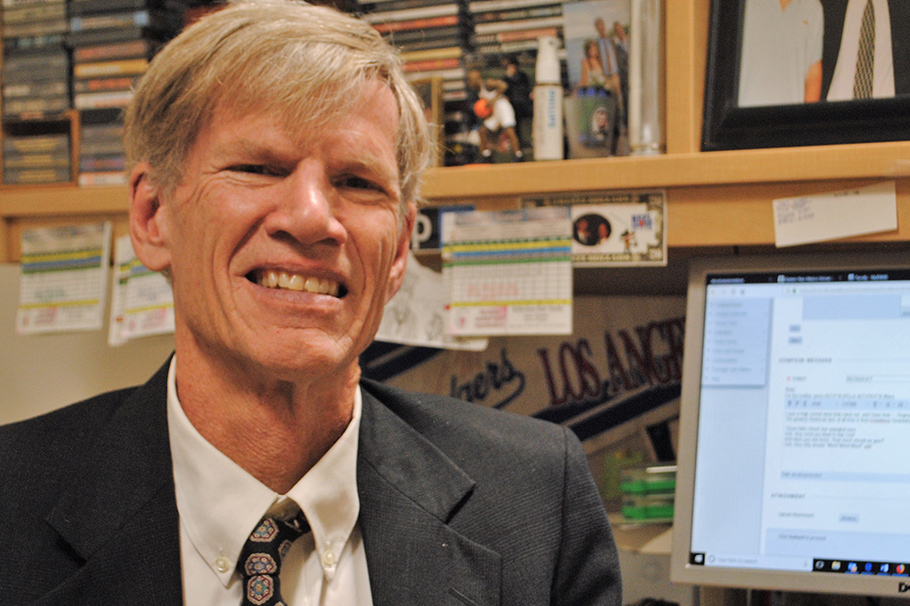Dr. Donald Elder III, professor of history at Eastern New Mexico University, was recently chosen to chair the effort to create a memorial for the Apollo One crew at Arlington National Cemetery. He will be joined on the committee by Frank Slazer of the Aerospace Industries Association, Michael Ciancone of the Johnson Space Flight Center and Rick Sturdevant of the United States Air Force Space Command.
Dr. Elder discussed the timeline of the project and how the committee is preparing to appear before Congress with plans for the memorial:
How did your role of chair of the effort to create a memorial for the Apollo One crew at Arlington National Cemetery come about? What is the background of this project?
On January 27, 1967, three NASA astronauts—Gus Grissom, Ed White, and Roger Chafee—were participating in a trial run in preparation for the first launch of an Apollo mission, scheduled to take place a month later. Tragically, a fire started in the Apollo One capsule, and the toxic fumes created by the conflagration suffocated them. Over the next fifty years, momentum built behind the idea that the nation should recognize the heroism of these three astronauts by creating a memorial to them.
Since all three of the fallen astronauts had transferred to NASA directly from the military (unlike today, when many individuals go directly into the astronaut corps from civilian life), many felt that Arlington National Cemetery would make an ideal repository for such a memorial. Accordingly, Congress passed an act that created a mechanism for taking the idea to its fruition. A requirement of the act involved the creation of a committee to oversee the effort, and the American Institute for Astronautics quickly took up that challenge.
Recognizing that a committee drawn from both the space industry and the individuals who chronicle the history of the Space Age, the AIA recommended one of their own and three other people to comprise the committee. I was humbly honored to learn that the AIA not only wanted me on the committee, but also asked if I would serve as the chair.
In conversations with representatives of the AIA, I learned that they had a number of reasons for asking me. First, I have served on the American Astronautical Society History Committee since 1994. Second, since 2008 I have chaired the selection committee for the Eugene M. Emme Prize, awarded annually to the best book on the subject of Aeronautics and Astronautics. Third, I served for ten years as the editor of the History of Rocketry and Astronautics book series. Fourth, I have served on the International Academy of Astronautics History Committee since 2016. Finally, my first book, written on the subject of our first telecommunications satellite, won the manuscript award given by the American Institute of Aeronautics and Astronautics in 1995. Still, I was pleasantly surprised to be asked to chair the effort to create a memorial for the Apollo One astronauts.
What are your plans and duties in the role of committee chair?
To be perfectly honest, Frank Slazer of the AIA has done an appreciable amount of the preliminary work. What I will need to do is oversee the process to select a suitable memorial, and raise funds to build it. I will also help to set up a program for the dedication of the memorial when it is completed.
What is the timeline of the committee and project?
We feel that this year lends itself well to an initiative such as ours, as it is the 50th anniversary of the successful Apollo moon mission. We therefore hope to have all of the aspects concluded by October 2019 at the latest. We feel confident that we will be able to find a location in the ANC close to the one created to honor the men aboard the USS Thresher, who lost their lives in an accident in April of 1993.
You will appear before Congress with this committee. Discuss that process.
Based on previous efforts of a similar nature, I envision that the four members of the committee will all be asked to testify before the US Army to explain their selection of the memorial. If I understand the process correctly, I would field the questions, and then determine which member should specifically supply a response. We hope that the reports we are creating will be self-explanatory.
What does having this role and helping to create this memorial mean to you?
There are many American who love their country, but have never had the opportunity to risk everything to carry out the responsibilities of a national security-related task. I clearly fit into that category. Therefore it would be a noble undertaking for me to help honor brave men who gave their lives for my nation by helping to create a memorial for them. I will thus pay homage to all of my ancestors who did risk giving the "last full measure of devotion to their nation."
In which other committees have you served as chair?
As previously mentioned, I chair the Eugene M. Emme Award for the outstanding book on Aeronautics and Astronautics. I also served as the interim chair for the New Mexico State History Commission for six months, before returning to my regular post as a district commissioner.
Final thoughts?
With memorials for both the Space Shuttles Challenger and Columbia at the ANC, it seems only fitting that the first astronauts to die as they prepared to take American interests into space deserve a similar memory on that hallowed ground. If my compatriots and I can help make this a reality, we will have done a service to the nation that will truly stand the test of time.



